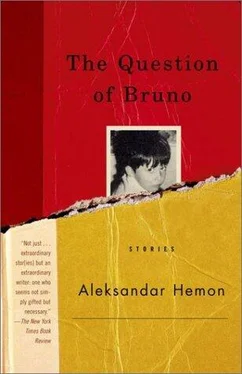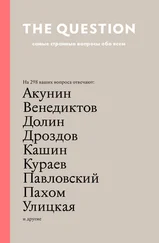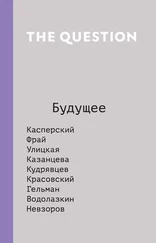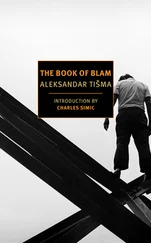1It seems that the Rote Kapelle network initially sent the information that German forces were going to attack the Soviet Union. Since the Ribbentrop-Molotov pact was considered to be valid and the source of the information was unclear, Moscow virtually ignored it. But when Sorge sent the confirmation from Tokyo, the information was passed on to the great Stalin himself. He, however, disregarded it and decided to trust Hitler and the Ribbentrop-Molotov pact. Sorge’s report from Tokyo on German intentions was filed under the heading “Doubtful and Misleading Information.”
2Sorge flew from Berlin to Yokohama on Junker’s first commercial flight from Germany to Japan, with brief stops in New York and Vancouver. Besides the flight log of Flight 1995, kept in the Museum of German Aviation in Frankfurt, there are no records of this historical endeavor. There is no list of passengers, but it is almost certain that the flight was almost full. It seems that the passengers were cosmopolitan, and that the flight was tumultuous (“Winds over the Pacific were just horrid!”); that something was wrong with the heating system, so the passengers were freezing even with miraculously retrieved fur hats and leather gloves; that no one else slept on the flight; that the food was edible, but for some reason there was no water so they all drank champagne (courtesy of Junker); that the plane almost went down in the middle of the night, somewhere over the Pacific; that first men, then women, disgorged themselves all over the aircraft and the vomit froze on the floor; that Sorge briefly befriended a certain Mary Kinzie, an American poetess, which did not go unnoticed by New York gossip-scribes. On September 9, 1933, in the early afternoon, Sorge and his shadowy copassengers arrived at the Yokohama airport, reeking of vomit, emptied of champagne and lobster, with particles of undigested food thawing on the soles of their shoes. Some of them were proud of German air-industry and reliability, some of them were happy to be alive.
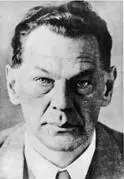
3In the early sixties, in the de-Stalinized Soviet Union, the campaign of Sorge’s glorification was set on course and a number of books that contained Sorge’s pictures and previously unrevealed documents from Soviet archives were published. Most of the books were embellished (if not embroidered) with, so to speak, fictitious additions. At the same time, a street in Moscow and a tanker were named after Sorge. In the spring of 1965, the Soviet authorities issued a postage stamp, at the value of 4 kopecks, in his honor. The commemorative stamp showed Sorge full face on a scarlet background together with a reproduction of the medal of the Hero of the Soviet Union.
4Father: Wilhelm Richard Sorge, a German engineer, a stout man with a nipple-like wart on the nape of his neck and cloudy eyebrows. Working on the Azerbaijan oil fields, when he fell in passionate love with Sorge’s mother. Sorge was conceived and born in Baku.
5Sorge went to Moscow (from Tokyo, via New York, ostensibly visiting Wiesbaden), for the last time, in 1935. In New York, he encountered, for the last time, Mary Kinzie. In her memoirs, entitled The History of Nothingness , Ms. Kinzie depicts Sorge: “When I saw him in 1935 he had become a violent man, a volcanic drinker. Little was left of the charm of the romantic idealist, of the cosmopolitan writer whom I had fallen for on Junker’s flight. Nevertheless, he was still extraordinarily good-looking: his cold blue eyes, surrounded by circular darkness, had retained his capacity for vicious self-mockery. He said: ‘My personality is split between a man who hates himself and a man whom I hate.’ His hair was still potently black, but his cheekbones and sullen mouth were tired” (p. 101).
In Moscow, Sorge visited Yekaterina Maximovna, whom he was believed to have married in 1933, and who died in Siberia in 1943, in a women’s camp, her throat cut by a sharp piece of ice in the hand of a jealous working-unit leader. Sorge was looking forward to meeting General Berzin, but General Berzin was gone and was replaced by General Semyon Petrovich Uritsky, who was arrested and shot as a Japanese spy in November of 1937.
6Mother: Nina Kobelev, a conventional Russian beauty (big eyes, bony pink cheeks, rotund nose, small mouth with thick lips, cobwebby mustache-shadow, long silky hair, etc.), the daughter of Wilhelm’s landlord in Baku. Sorge was born on October 4, 1895, after 37 hours of hard labor. Let us note an obvious thing: Germany was his Fatherland, Russia was his Motherland.
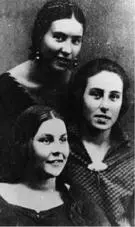
7Having agreed to write the full confession, Sorge demanded a (black-and-green) Pelikan fountain pen and a hard-covered notebook with blank sheets. Yoshikawa himself delivered the writing devices. Sorge thanked him and said, in poor Japanese: “Honourable Procurator, this fountain pen is a poisonous fountain pen.” Yoshikawa replied: “Honourable Spy, it is the redeeming fountain pen.” Then they both laughed.
8Sorge never disguised himself, but changed names often. He bragged to Max Klausen that he had more names than women (“And that is a lot, Max!”). He was known as I. K. Sorge, R. Sonter (Moscow 1924–1928); Johann, Sebastian (Sweden, 1928); Christopher, Christian (England, 1929); Johnson, Jim, Gimon, Marlowe (Shanghai, 1930–1932); Richard Sorge (Tokyo, 1933–1944); and there were many other, unknown, evanescent names.
9Sorge’s activities were much less adventurous than an avid reader would hope. In his written confession, Max Klausen, referring to the years 1933–1939, says: “Six dangerous years passed uneventfully,” pointing toward the routine of everyday spying. Sorge’s spying meant patiently collecting diverse, and sometimes ostensibly trite, information: a gossip about the Anti-Comintern Pact negotiations; a rumor about the Cabinet changes; the essence of a drunken soldier’s swaggering about the military life in Manchuko; someone else’s husband being with someone else’s wife — useful information for the future Index; air of insurgent desires of young army officers, brought from afar by Miyagi; chitchat among foreign journalists; a careless remark of the German ambassador about “everybody being crazy in Berlin about the Russia attack.” In 1936, however, Sorge obtained a position as the unofficial secretary to the German military attaché, Colonel Ott (“an honest, pleasant, gullible man, with oily military hair, and a thousand and one WWI stories”), and in 1939 he became the German embassy press attaché. This position enabled him to access documents that were considered confidential, even top-secret. Only occasionally he would photograph the document, as in the case of the preliminary document for the Anti-Comintern Pact. Mostly, there was no need for surreptitiousness for he would take any desired document to his improvised office (ex-coffee-kitchen, still reeking of beer from the party celebrating the anniversary of the Hitler ascension) where he would photograph it, or even make notes, at his will. In his article in Literaturnaya Gazeta (January 20, 1965), entitled “The Man Who Never Knew Enough,” Victor Venykov aptly notes: “A spy is above all a man of politics, who must be able to grasp, analyze and connect in his mind events which seemingly have no connection. He must have the breadth of a historian, the meticulous powers of observation, the spirit and the mind of Tolstoy. Espionage is a continuous and demanding labor and the spy forms himself in that process. Least of all was Sorge like those secret agents whom certain Western authors have created. He did not force open gates in order to steal documents: the documents were shown to him by their very owners. He did not fire his pistol to penetrate the places which he had to penetrate: the doors were graciously opened to him by the guardians of the secret. He did not have to kill. But he was murdered by the brutal machinery”
Читать дальше
